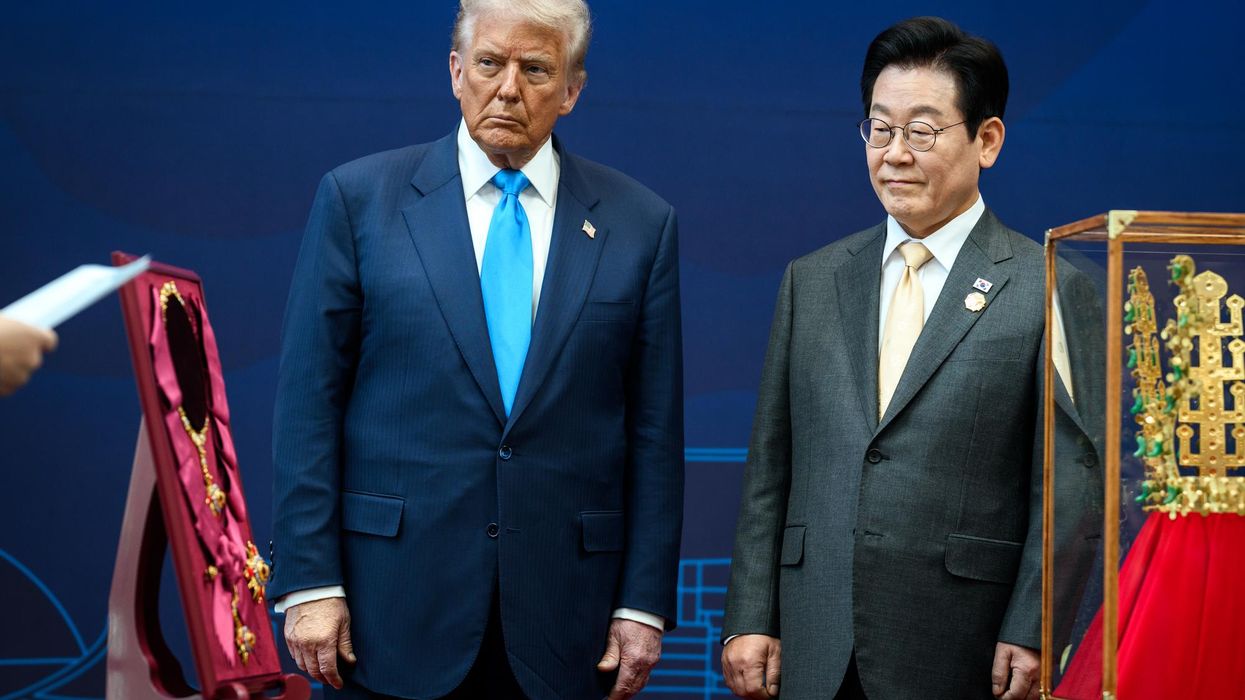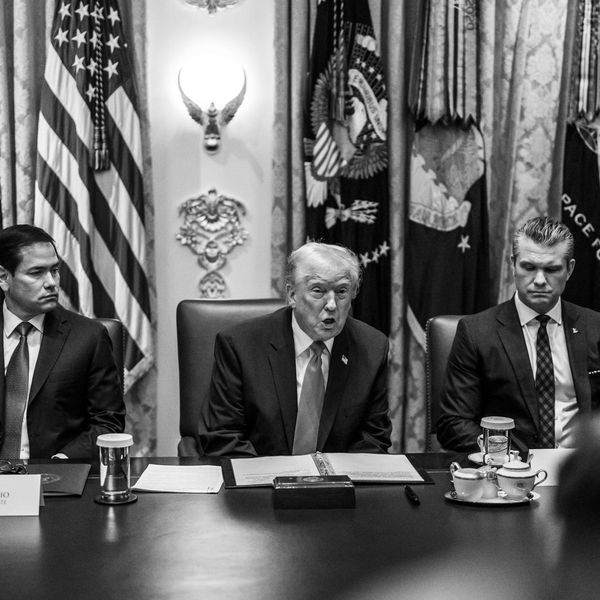The first 100 days of President Joe Biden’s administration have come and gone. While somewhat exaggerated, that milestone is normally considered the honeymoon period for any new president. Buoyed by a recent election triumph and inauguration, he’s expected to be at the peak of his power when it comes to advancing the biggest, boldest items on his agenda.
And indeed, as far as, say, infrastructure or pandemic vaccination goals, Biden has delivered in a major way. Blindly funding the Pentagon and its priorities in the stratospheric fashion that’s become the essence of Washington has, however, proven another matter entirely. One-hundred days later and it’s remarkable how little has changed when it comes to pouring money into this country’s vast military infrastructure and the wars, ongoing or imagined, that accompany it.
For the past decade, debate about the Pentagon budget was governed, in part, by the Budget Control Act, which placed at least nominal caps on spending levels for both defense and non-defense agencies. In reality, though, unlike so many other government agencies, the Pentagon was never restrained by such a cap. Congress continued to raise its limits as military budgets only grew and, no less important, defense spending had a release valve that allowed staggering sums of money to flow without serious accounting into an off-budget fund meant especially for its wars and labelled “the overseas contingency operations account.” The Congressional Research Service has estimated that such supplemental spending from September 11, 2001, to fiscal year 2019 totaled an astonishing $2 trillion above and beyond the congressionally agreed upon Pentagon budget.
Now, however, the Budget Control Act has expired, leaving this administration with a striking opportunity to reorient the country away from trillion-dollar-plus national security budgets and endless wars, though there’s little sign that such a path will be taken.
If there’s one thing Americans should have learned in the last year-plus, it’s that endless Pentagon spending doesn’t actually make us safer. The pandemic, the insurrection at the Capitol, and the persistent threat of white nationalist extremism should have made it all too clear that defending this country against the most significant risks to domestic public health and safety don’t fall within the Pentagon’s purview. In addition, the Department of Defense is perhaps the country’s greatest source of wasteful spending and mismanagement.
Sadly enough, however, it’s likely to be business as usual as long as the money continues to flow in the usual fashion. How striking and inexcusable then that, when it comes to the Pentagon, the Biden administration has visibly wasted its pivotal first 100 days in office on yet more of the same. What we already know, for instance, is that, despite a planned withdrawal of American troops from Afghanistan and claims about winding down America’s “forever wars,” the first proposed Biden Pentagon budget of $715 billion actually represents a modest increase over the staggering sums the Pentagon received in the last year of the Trump administration.
Admittedly, there is at least a little good news about the Pentagon’s finances in the Biden era (though it was already included in the last Trump administration Pentagon budget). The overseas contingency operations slush fund is finally being eliminated. While some saw this as a natural consequence of the end of the Budget Control Act, it was definitely a victory over weapons-industry-funded think tanks like the Center for Strategic and International Studies that were trying to persuade lawmakers and the public to “reform” the fund instead.
In addition, the Biden administration’s decision to bring the last troops home from Afghanistan could be an important initial step in drawing down this country’s endlessly expensive wars. It’s estimated that the United States will have spent upwards of $2.5 trillion dollars on the war in Afghanistan alone (including approximately $12.5 billion annually for the next 40 years on the care of its veterans), a conflict in which, according to Brown University’s Costs of War Project, more than a quarter of a million people were killed.
But Biden must do more if he wants to fulfill his promise to end the forever wars. That includes encouraging Congress to repeal long outdated war authorizations and committing not to let any future conflicts start without actual congressional declarations of war. Meanwhile, withdrawing troops from Afghanistan and other war fronts should result in significant Pentagon budget reductions, as has happened historically after wars — but don’t count on it.
The Pentagon behemoth of waste
If you want a bellweather for measuring the Pentagon’s influence in America, consider this: even the most disastrous weapons programs regularly get a pass and it’s unlikely the Biden era will end that reality.
Right now, any number of wasteful and troubled Pentagon programs, most notoriously Lockheed Martin’s F-35 Joint Strike Fighter, are officially being reviewed. The cost of the creation and maintenance of that jet alone has already ensured that it will be the most expensive weapons program in history: an expected $1.7 trillion over its lifetime. Even department officials and members of Congress have — and this is rare indeed — balked at just how expensive and unreliable that fighter aircraft has proven to be. Trump’s outgoing acting Secretary of Defense Christopher Miller called the F-35 a “piece of…,” tellingly leaving the last word hanging, but later referring to the plane as “a monster.” Meanwhile, Representative Adam Smith (D-WA), the chair of the House Armed Services committee, has made it clear that he’d like to stop throwing taxpayer dollars down that particular “rathole.”
Once upon a time, Americans were assured that, as the country’s future jet fighter, the F-35 would be “more Chevrolet than Porsche”; that is, on the low (and cheap) end of any new mix of future air power. A lot has changed since then. Total program costs have doubled, while the future price of maintaining the planes soared — unlike the planes themselves. Often, in fact, they aren’t in good enough shape to fly, raising serious concerns about whether enough F-35s will be available for future combat. The chief of staff of the Air Force now claims that it’s not the Chevrolet, but the “Ferrari,” of jet fighters and so should, in the future, be used sparingly. The predictable evolution of that plane was described by the legendary late Colonel Everest Riccioni as a modern Pentagon version of “unilateral disarmament.”
At the very least, no more F-35s should be purchased until testing is successfully completed, but such common sense has not, in recent memory, been a notable Pentagon trait — not in the world of the “revolving door” of the military-industrial complex. In this sense, the F-35 program has been typical of our times. In 2017, when delays and exploding costs led the Department of Defense to consider reducing the program’s size, then-commandant of the Marine Corps General Joe Dunford weighed in on the subject. Largely ignoring F-35 testing data, he promptly declared that the program had indeed reached initial operational capability (which it likely hadn’t). Unsurprisingly, soon after his retirement in 2019, he joined the board of Lockheed.
The future of the Pentagon will largely be shaped by the personnel selected to lead it. In too many instances, they’ve come directly from a defense industry that’s profited handsomely from its soaring budget. In the Trump administration, for instance, figures were selected for the position of secretary of defense who had worked for top defense firms. Retired general Jim Mattis had been on the board of General Dynamics (and returned to it shortly after his stint at the Pentagon ended); Patrick Shanahan came from Boeing; and Mark Esper came from Raytheon.
Although Joe Biden issued a strong ethics executive order to be applied to his political appointees across the board, so far his administration doesn’t look that different from past ones when it comes to the Pentagon. After all, his secretary of defense, retired General Lloyd Austin III, arrived directly from the board of Raytheon; while Frank Kendall, nominated to be Air Force secretary, comes from the board of Leidos, another top Pentagon contractor, though one that provides services rather than building weaponry. (While often overlooked, service contracts make up nearly half of all the department’s contract spending.)
Spreading defense contracts across congressional districts, a practice known in Washington as “political engineering,” also needs to end. Lockheed, for instance, claims that the F-35 program has created jobs in 45 states. According to conventional wisdom, it’s this reality that makes the Pentagon too big to fail. Though seldom noted, similar money put into non-military funding like infrastructure or clean energy almost invariably proves to be a greater job creator than the military version of the same.
Here, then, is a question that might be worth considering in the early months of the Biden administration: Is there a more striking indictment of this country’s approach to military budgeting than continuing to buy a weapon because our political system is too corrupt to change course?
Militarism at home
In our recent history, Washington has distinctly been a Pentagon-first sort of place. Often forgotten is how such an approach has negatively impacted communities not just in Afghanistan, Iraq, Somalia, or Yemen, but also here at home. To take one example, the Pentagon has played a key role in militarizing this country’s police forces, only contributing to the destructive cycle that was first widely noticed after police used military-grade weapons against those protesting the killing of an unarmed Black teenager, Michael Brown, in Ferguson, Missouri, in 2014. Continued police violence targeting the Black community finally gained major attention in the wake of the murder of George Floyd and the police response to the Black Lives Matter movement last summer. As colleagues of mine at the Project On Government Oversight have written, the militarization of our police makes the public “both less safe and less free.”
The Pentagon has negatively impacted the policing of America through its 1033 program, which in recent years has transferred staggering amounts of excess military equipment, sometimes directly off the battlefields of this country’s “forever wars,” to police departments across the country. Tools of war now transferred to local police forces include tanks, mine-resistant ambush-protected vehicles, assault rifles, and bayonets, among many other military items. The group Open The Books, dedicated to government transparency, found that since 1993 the program has transferred 581,000 items of military gear worth $1.8 billion to the police. Unsurprisingly, a 2017 study found police departments that received such equipment were more likely to kill the very civilians they are supposed to protect and serve.
At the beginning of the Biden administration, it appeared that the 1033 program would be curtailed. In January, Reuters reported that the president was preparing to sign an executive order that very month, which would at least put significant limits on the program. As of yet, more than three months later, the White House has taken no such action, though in March, Representative Hank Johnson (D-GA) did introduce legislation to curtail the program. According to the Security Policy Reform Institute, the National Association of Police Organizations claimed credit for delaying the president’s action.
So today, the military continues to make this country’s police look ever more like they’re occupying some foreign land.
The China chickenhawks
And if the China hawks who have gained significant power among the Biden foreign-policy team have anything to say about it, funding the Pentagon will continue to be the order of the day.
Not surprisingly, the Biden administration faces increasing pressure over China and the dangers of war, a narrative that seems like a response to a growing public consensus that we can’t continue to put the Pentagon’s needs first. The military services are already beginning to turn on each other as they fight for their share of the future budget pie. Concerned that the money train may finally be preparing to run off the tracks, there’s been a persistent drumbeat of exaggeration about the military threat posed by China.
In that context, the key document Pentagon boosters continue to cite, though it was published in 2018, is a report from the National Defense Strategy Commission. It recommended cutting the entitlement programs that make up this country’s social safety net to pay for a 3% to 5% annual increase in Pentagon spending. Most of the panelists on that commission were defense industry consultants, board members of the giant weapons makers, or lobbyists for the same. Needless to say, they had a financial stake in raising concerns that China would overtake the United States militarily in the reasonably near future.
Indeed, it’s a fact of life that competition with China is now a challenge, but it’s important to maintain a sense of realism about the nature of that threat. As John Isaacs of the Council for a Livable World recently showed, in capacity and strength, the U.S. military dominates China’s many times over. “It seems that China has become the new Soviet Union strawman,” Isaacs wrote. “But there’s one big difference: while the Soviet military and nuclear arsenal were a fair match for the United States’, China’s simply aren’t.” The new cold war with China that the Biden administration is already promoting only threatens to weaken this country as resources are diverted away from combating the most serious threats of our time like pandemics, climate change, and white supremacy.
Unfortunately, in February, the Biden administration, having largely bought into this rhetoric, announced the establishment of a new Pentagon China Task Force. The most likely outcome, as my colleague Dan Grazier points out, is that the president and his foreign policy team will provide ample “cover for elected officials to back unpopular policy recommendations that will end up fulfilling the wish list of the defense industry.”
As longtime Atlantic correspondent and defense-reform expert James Fallows has noted, America’s draft-less twenty-first-century wars have essentially ensured that the U.S. has become a “chickenhawk nation.” For those unfamiliar with the term, chickenhawk refers to “those eager to go to war, as long as someone else is going” in their place. The net result is that the American public has, in this century, proven remarkably complacent about how Washington has used force, “blithely assuming we would win.” It was bad enough with Afghanistan, Iraq, and the other forever-war countries, but when it comes to China, it’s hard to imagine anything but the most negative outcomes from those encouraging military conflict.
Meanwhile, as with so much related to the Pentagon, the consequences at home of the China scare are already apparent. As has been increasingly obvious of late, overheated rhetoric about the dangers of China have led to an increase in hate-crime attacks against Asian Americans nationwide. While former President Trump’s anti-China rhetoric (“Kung-flu,” “China Virus”) seems to have contributed significantly to this increase in hate crimes, so has the rise in fear-mongering about the China threat and the bolstering of what’s still called “defense” policy that’s gone with it.
This country would undoubtedly benefit from more competition with (as well as cooperation with) China that would strengthen the economy and create more prosperity here. On the other hand, a new cold war atmosphere will allow the Pentagon to horde resources that would otherwise go to our greater public health and safety needs.
Unfortunately, 100-plus days later, the Biden administration has already wasted its first opportunity to change course.
This article has been republished with permission from TomDispatch.
















